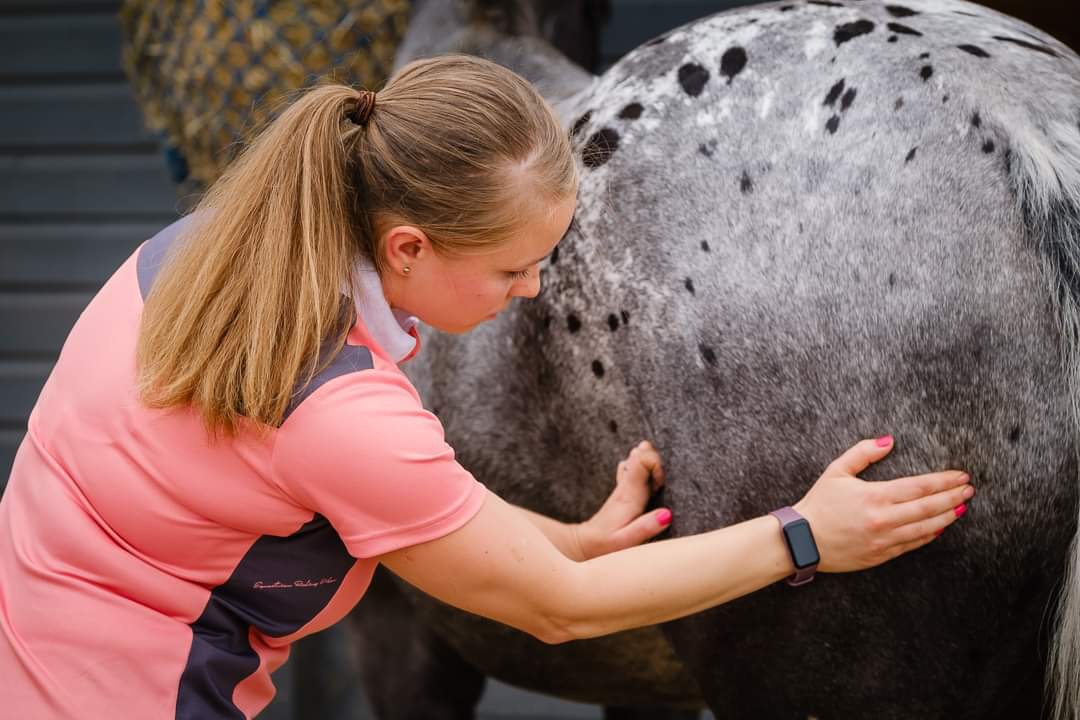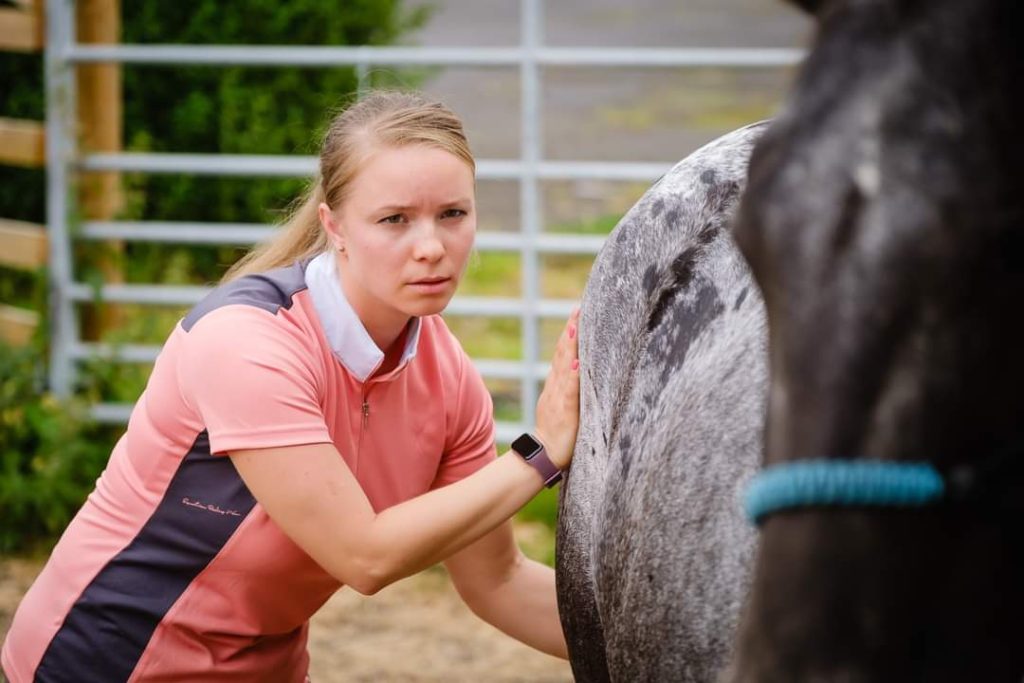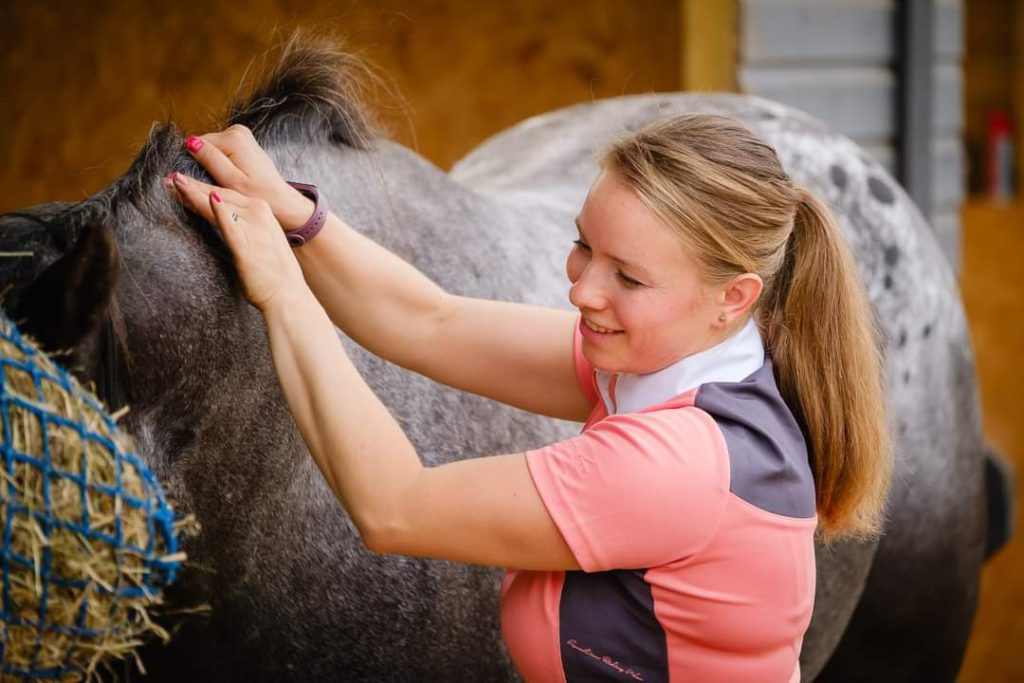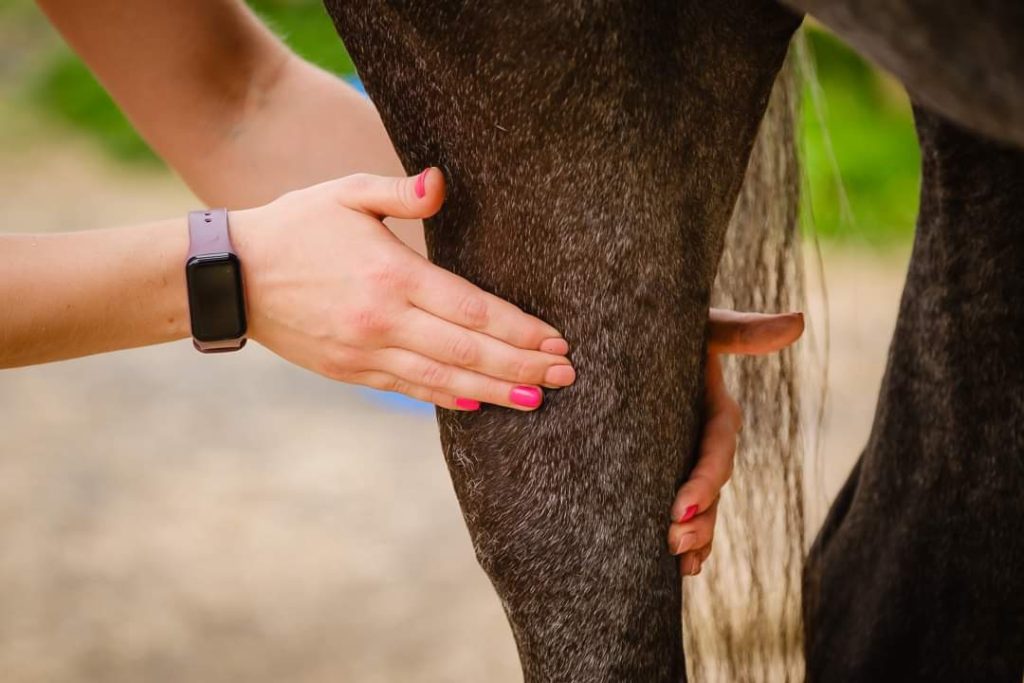Effleurage has a mechanical draining effect. It is the use of long, slow, rhythmic movements used to warm tissue, weave massage movements together, or to finish massage work by properly draining the tissues. It induces physiological and psychological relaxation, encourages a natural release of endorphins and relaxes or stimulates the body depending on the technique used.
Stroking is used to soothe, relax, and calm the body through its effects on the nervous system (pure nervous reflex action). It is applied with light pressure in the direction that the horse’s coat lies along the length of the muscle. If the horse is very nervous, stroking his neck, back and legs will help ground him and relax. Stroking is a wonderful introduction to the treatment ahead and allows the horse to feel my touch.

Petrissage covers the following: kneading, compression, muscle squeezing, picking up, wringing and skin rolling. Depending on the rhythm these moves are applied, they can be soothing or stimulating. Petrissage alternates pressure and relaxation and is a mechanical movement.
Kneading compresses the tissues against the underlying bone structures. Better circulation and improved oxygen are two of the main benefits. Kneading will also affect the various muscle fibre bundles by separating them and assisting draining.
Compression is done by using the palm of the hand or a lightly clenched fist. This can be alternate hand pressure directly into the muscle.

Muscle squeezing is used mainly over the crest of the neck, tail and legs. This technique helps decongest and relax tense muscles.

Picking Up is used mainly for the upper forelegs and hind legs, stifle and crest of the neck.

Wringing stimulate circulation and is great across the horses back before and after riding.
Skin rolling is a very soothing manipulation and is used to maintain a healthy and shining coat. It can prevent the formation of excess adhesions and maintains the elasticity of the skin. This is a great move on the neck over the splenius muscle and trapezius (cervical) area.
Friction breaks down adhesions and scar tissue. Friction usually follows effleurages and wringing, or kneading. In sports massage, it generally follows effleurage and trigger point. Can be applied using the thumb, finger, or hand. Friction is assisting the body’s natural healing mechanisms to help break down adhesions within the muscle tissue, resulting in re-establishing the body’s natural cleansing and healing process. It also helps to reduce muscle spasms and pain, assists to mobilise deep scarring, and relaxes tense muscles.
Tapotements are a series of soft blows to the body using rhythmical movements such as clapping, cupping, hacking, beating, and pounding. This technique is great for energising the body. It is often used to warm up a horses muscle groups prior to exercise.
Vibration affects the muscles and joints that are just below the superficial tissue. Can be used on most areas, but it is very useful to use on areas that you can not really massage such as joints and swollen areas. It is great for horses who have problems with arthritis. The vibration will help to soothe and relax the area helping the horse’s joints to feel better and possibly relieve some of the pain.
Shaking is used regularly in treatments which will increase circulation and help the horse relax where he may be holding tension. Also helps to confuse the proprioceptors which allows the horses muscles to relax. Shaking is also used for things such as stretching.